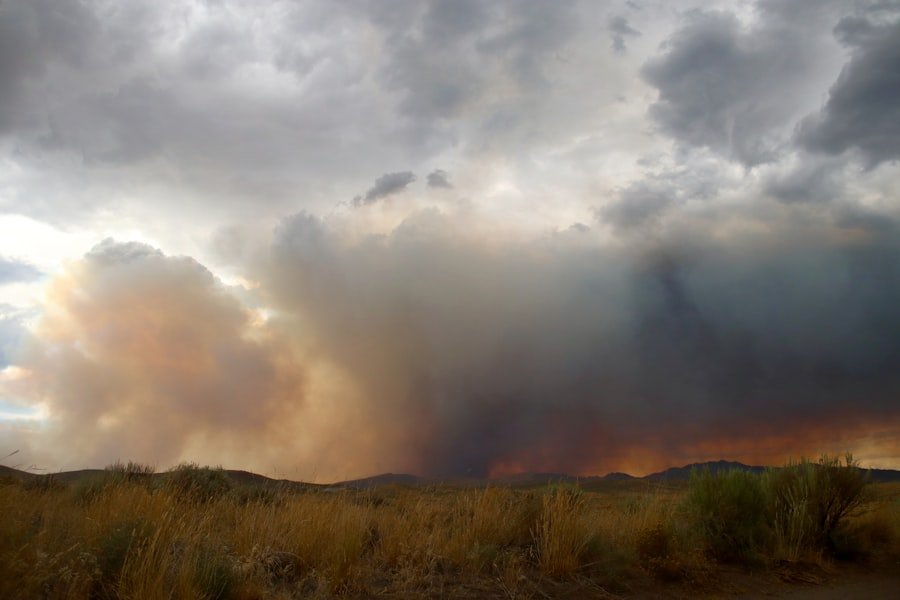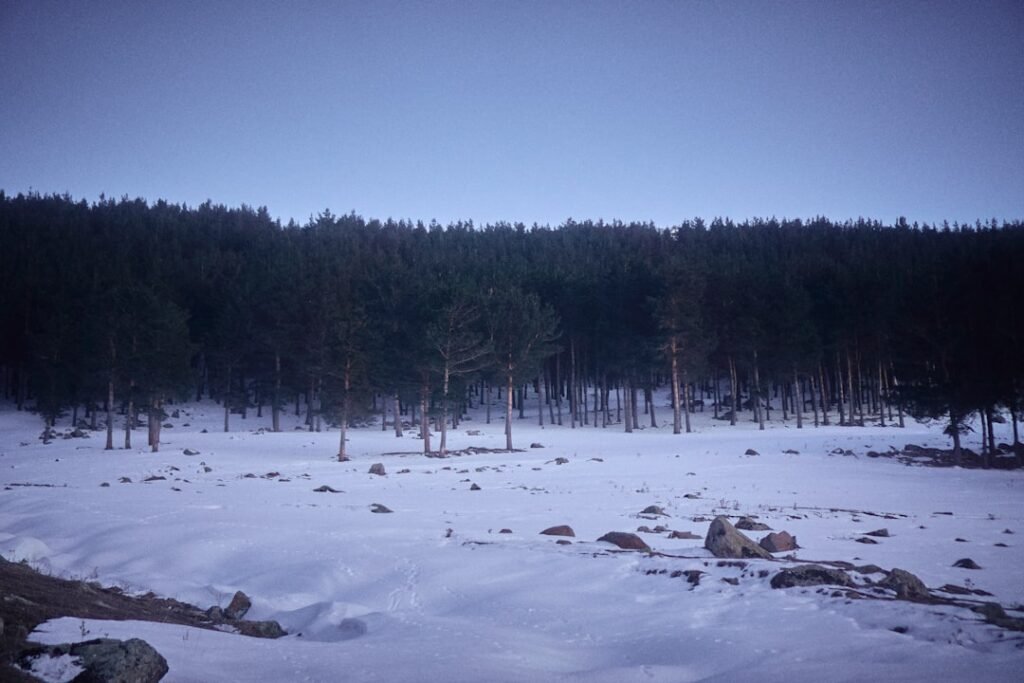Norway’s forests are facing significant challenges due to climate change. The country’s unique climate and geography make it particularly vulnerable to the impacts of global warming. Rising temperatures, changing precipitation patterns, and increased frequency of extreme weather events are all contributing to the transformation of Norway’s forest ecosystems. In this article, we will explore the various ways in which climate change is affecting Norway’s forests and discuss the challenges and opportunities for forest management and economic development in the face of these changes.
Impact on Forest Ecosystems
Climate change is having a profound impact on Norway’s forest ecosystems. Rising temperatures are causing shifts in the distribution and composition of plant species, with some species moving northward or to higher elevations in search of suitable habitats. This has led to changes in the structure and functioning of forest ecosystems, as well as alterations in the timing of key ecological processes such as flowering and fruiting.
The changing climate is also affecting wildlife populations in Norway’s forests. Some species are experiencing range contractions or expansions, while others are facing increased competition for resources or changes in their food sources. For example, the Arctic fox, which relies on snow cover for hunting, is facing challenges as snowfall patterns become less predictable. Similarly, migratory bird species that rely on specific habitats for breeding or stopover sites during migration may be negatively impacted by changes in vegetation composition or availability of suitable habitats.
Challenges in Forest Resource Utilization
The changing climate poses significant challenges for industries that rely on Norway’s forest resources. For example, the forestry sector is facing increased risks from extreme weather events such as storms and heavy rainfall, which can cause damage to forests and disrupt logging operations. In addition, changing precipitation patterns can affect the availability of water resources for hydropower generation, which is an important source of renewable energy in Norway.
To adapt to these challenges, industries are implementing various strategies. For example, the forestry sector is investing in improved forest management practices to enhance the resilience of forests to climate change. This includes measures such as selective logging, reforestation, and the use of genetically diverse tree species that are better adapted to changing conditions. Similarly, the hydropower sector is exploring ways to optimize water management and reduce vulnerability to changing precipitation patterns.
Forest Fires: Causes and Response
One of the most visible impacts of climate change on Norway’s forests is the increase in forest fires. Rising temperatures and drier conditions are creating more favorable conditions for wildfires to occur and spread. In recent years, Norway has experienced an increase in the number and severity of forest fires, with significant impacts on both ecosystems and human communities.
To address this issue, authorities in Norway are implementing various measures to prevent and respond to forest fires. This includes increasing fire monitoring and early warning systems, improving firefighting capabilities, and promoting public awareness and education about fire prevention. In addition, efforts are being made to restore fire-adapted ecosystems and promote the use of controlled burns as a management tool in certain areas.
Worsening Forest Pests and Diseases
Climate change is also contributing to the worsening of forest pests and diseases in Norway. Rising temperatures can accelerate the life cycles of pests such as bark beetles, leading to increased infestations and tree mortality. Similarly, changing precipitation patterns can create favorable conditions for the spread of fungal diseases that can affect tree health.
To prevent and control outbreaks of pests and diseases, various measures are being taken in Norway. This includes monitoring and early detection systems, quarantine measures to prevent the introduction of new pests or diseases, and the use of integrated pest management strategies that minimize reliance on chemical pesticides. In addition, efforts are being made to enhance the resilience of forests to pest and disease outbreaks through improved forest management practices.
Opportunities for Forest Protection and Restoration

Despite the challenges posed by climate change, there are also opportunities for forest protection and restoration in Norway. The country has a long history of forest conservation and sustainable management, and these efforts can be further enhanced in the face of changing conditions. For example, protecting and restoring forests can help to mitigate climate change by sequestering carbon dioxide from the atmosphere.
There are already successful examples of forest restoration projects in Norway. For instance, the country has implemented large-scale reforestation programs to restore degraded areas and increase forest cover. These projects not only contribute to carbon sequestration but also provide important habitats for wildlife and enhance the resilience of ecosystems to climate change.
Prospects and Challenges for Forest Economic Development
Norway’s forests offer significant potential for economic development, but achieving sustainable development in the face of climate change poses challenges. The forestry sector, for example, faces the dual challenge of meeting increasing demand for wood products while ensuring the long-term sustainability of forest resources. This requires careful planning and management to balance economic, social, and environmental objectives.
In addition, industries such as tourism and recreation can benefit from the unique natural landscapes and biodiversity found in Norway’s forests. However, these sectors also need to consider the impacts of climate change on visitor experiences and the need to minimize negative environmental impacts.
Forest Management and Adaptation to Climate Change
Effective forest management is crucial for adapting to climate change and ensuring the long-term sustainability of Norway’s forests. This includes implementing adaptive management strategies that take into account the changing conditions and uncertainties associated with climate change. For example, forest managers can use models and decision support tools to assess the vulnerability of forests to climate change and identify appropriate adaptation measures.
Strategies for forest management in the face of climate change include promoting diverse tree species composition, enhancing forest resilience through improved silvicultural practices, and integrating climate change considerations into forest planning processes. In addition, collaboration between stakeholders such as government agencies, industry, and local communities is essential for successful adaptation to climate change.
Promotion and Development of Forest Ecotourism
Forest ecotourism offers significant potential for sustainable economic development in Norway. The country’s forests are home to a rich diversity of flora and fauna, as well as unique cultural and historical heritage. This provides opportunities for nature-based tourism activities such as hiking, wildlife watching, and cultural tours.
Successful examples of forest ecotourism initiatives in Norway include the establishment of nature reserves and national parks, the development of eco-lodges and visitor centers, and the promotion of sustainable tourism practices. These initiatives not only provide economic benefits but also contribute to the conservation of forests and biodiversity.
Forest Technology Innovation and Sustainable Development
Technology plays a crucial role in achieving sustainable development in Norway’s forests. Innovative technologies can help to improve forest management practices, enhance the efficiency of resource utilization, and reduce environmental impacts. For example, remote sensing technologies can be used to monitor forest health and detect changes in vegetation patterns, while digital tools can support decision-making processes and facilitate stakeholder engagement.
There are already several innovative technologies being developed and implemented in Norway’s forests. For instance, drones are being used for forest inventory and monitoring, while advanced modeling tools are being used to simulate the impacts of climate change on forest ecosystems. In addition, digital platforms are being developed to facilitate the sharing of information and knowledge among stakeholders.
In conclusion, climate change is having significant impacts on Norway’s forests, with implications for ecosystem functioning, resource utilization, and economic development. However, there are also opportunities for forest protection, restoration, and sustainable economic development in the face of these challenges. By implementing adaptive management strategies, promoting collaboration between stakeholders, and harnessing the potential of technology and innovation, Norway can ensure the long-term sustainability of its forests in a changing climate.
请阅读我们的挪威语家居和生活词汇12种家具的相关文章。这篇文章将为您提供有关挪威语中家居和生活词汇的详细信息。了解这些词汇将帮助您更好地理解挪威森林气候变化对家具和生活方式的影响。
FAQs
什么是挪威森林气候变化影响?
挪威森林气候变化影响是指全球变暖导致的气候变化对挪威森林生态系统和生物多样性的影响。
全球变暖对挪威森林有哪些影响?
全球变暖导致挪威森林的温度升高和降雨量减少,这可能导致森林火灾、干旱、病虫害等问题。同时,气候变化也会影响森林中的植物和动物种群,可能导致物种灭绝。
挪威政府采取了哪些措施来应对气候变化对森林的影响?
挪威政府采取了多项措施来应对气候变化对森林的影响,包括减少温室气体排放、保护森林生态系统、加强监测和研究等。
气候变化对挪威森林旅游业有何影响?
气候变化可能对挪威森林旅游业造成影响,例如森林火灾、干旱等问题可能导致游客减少。同时,气候变化也可能影响森林中的植物和动物种群,可能导致旅游景点的变化。

